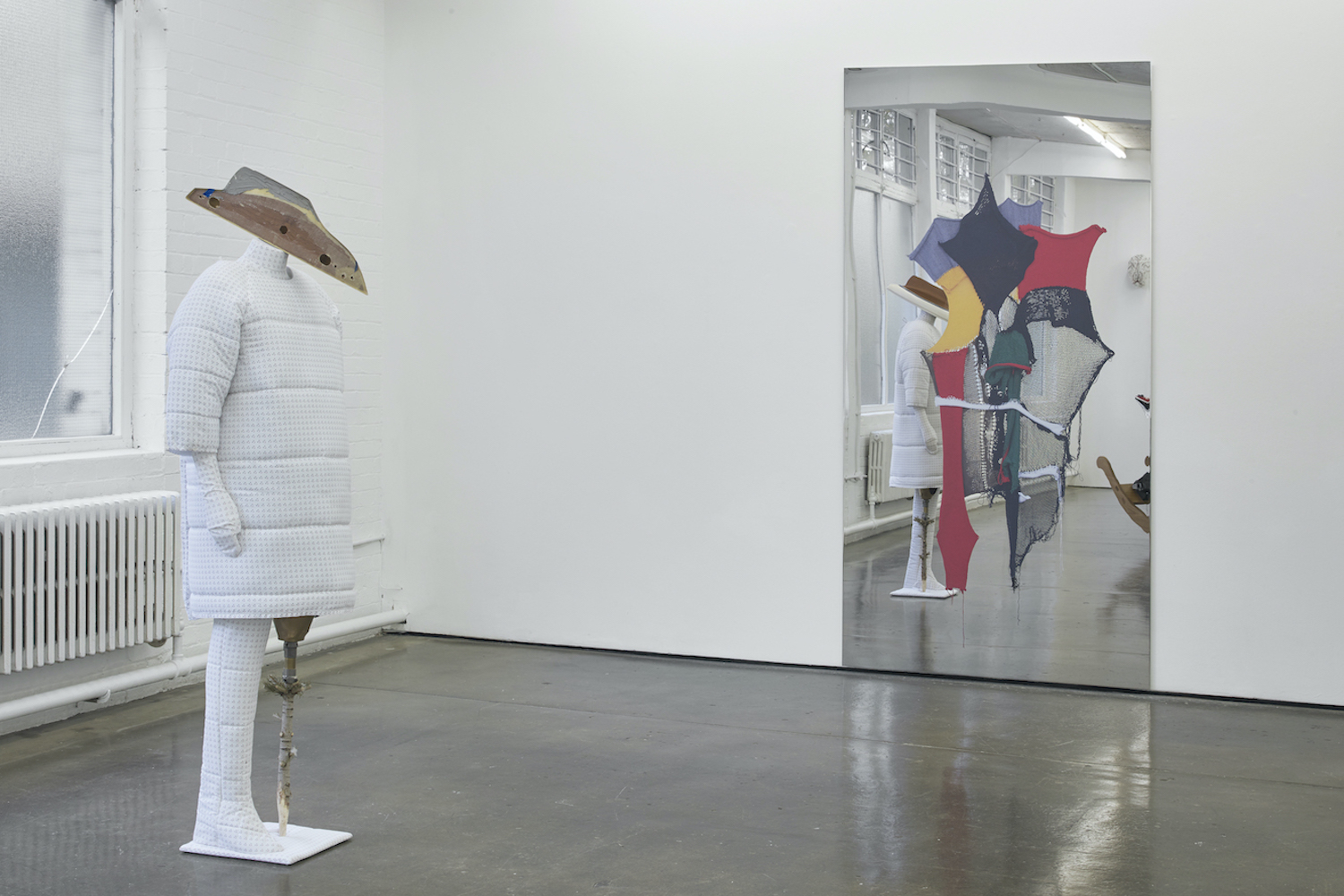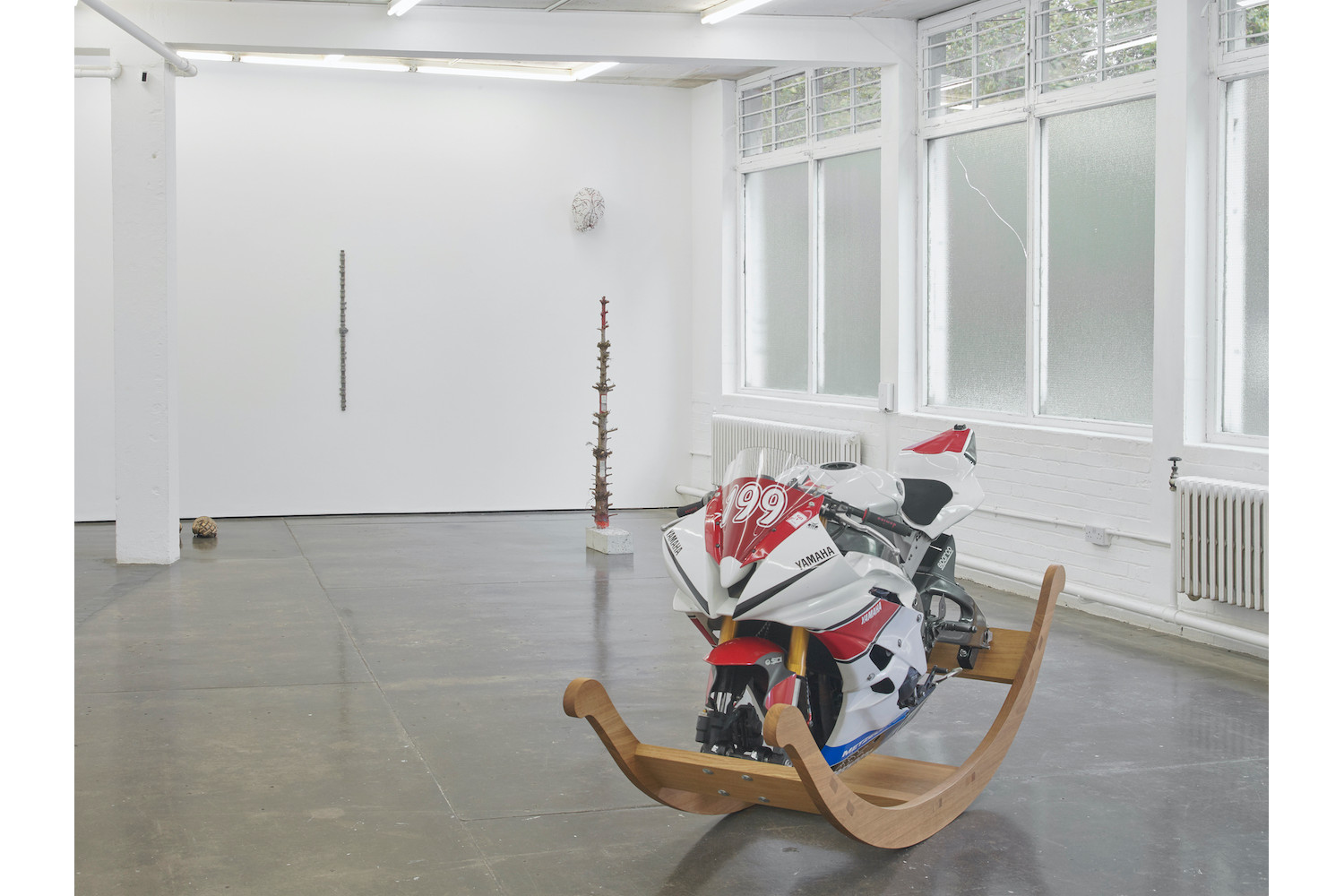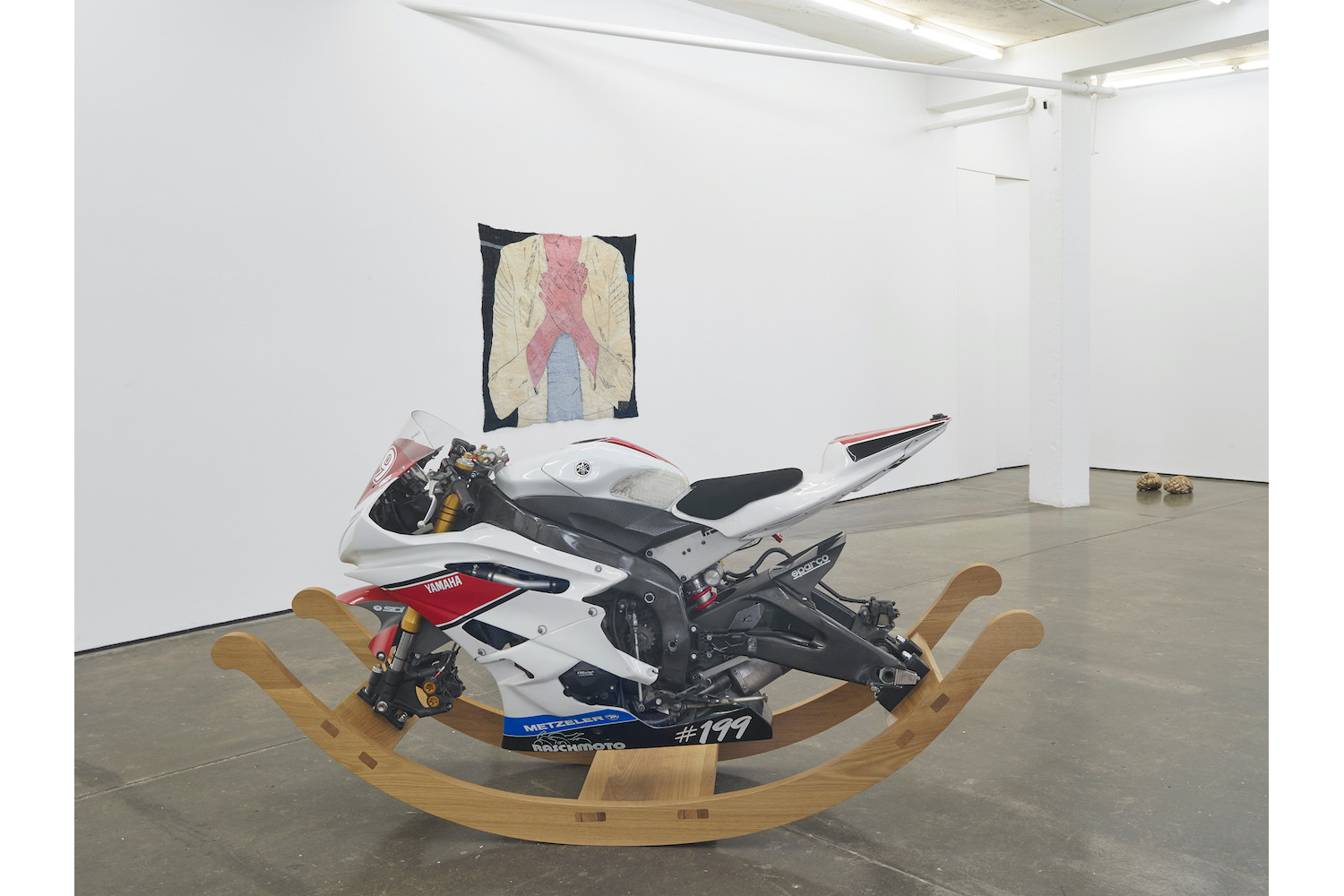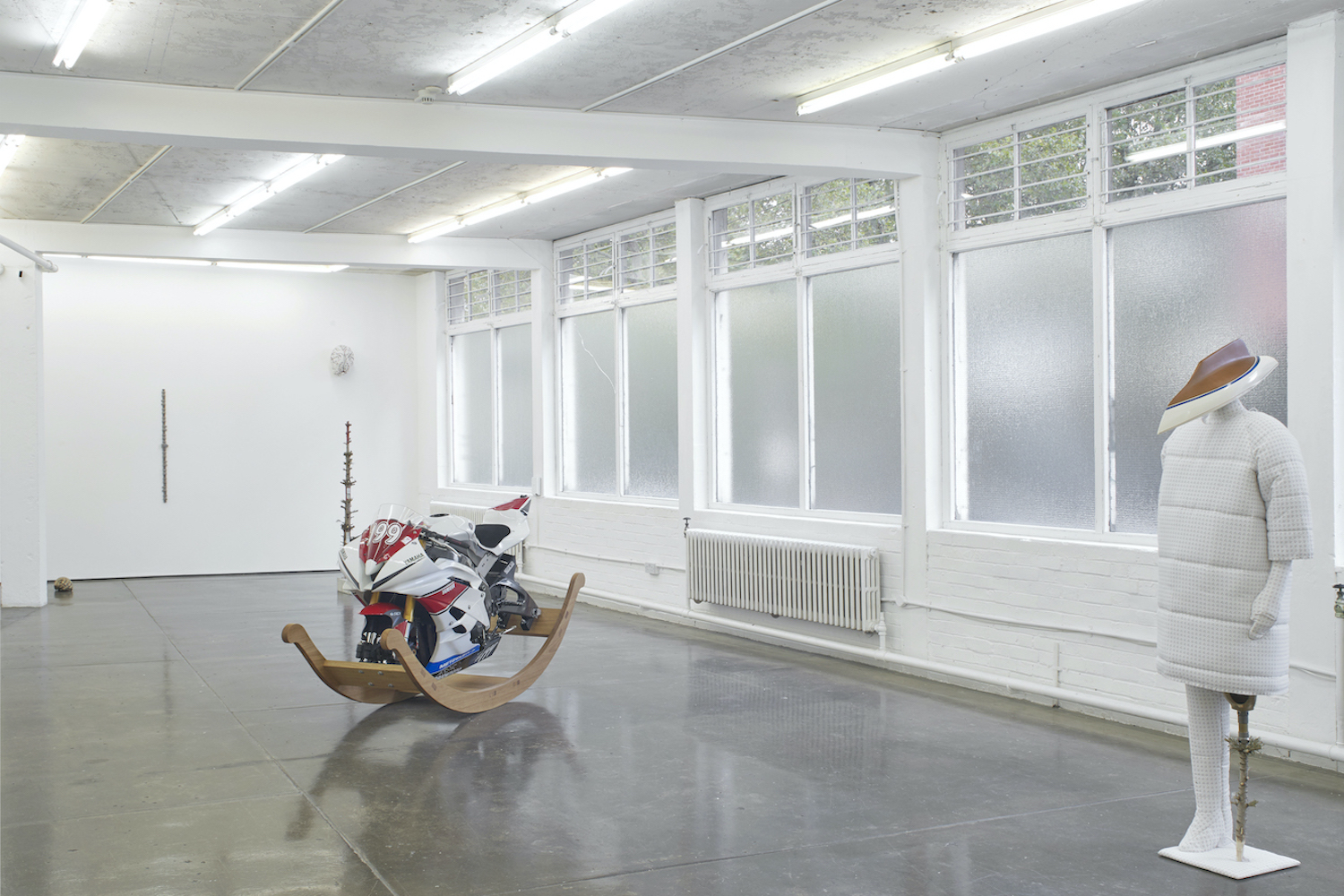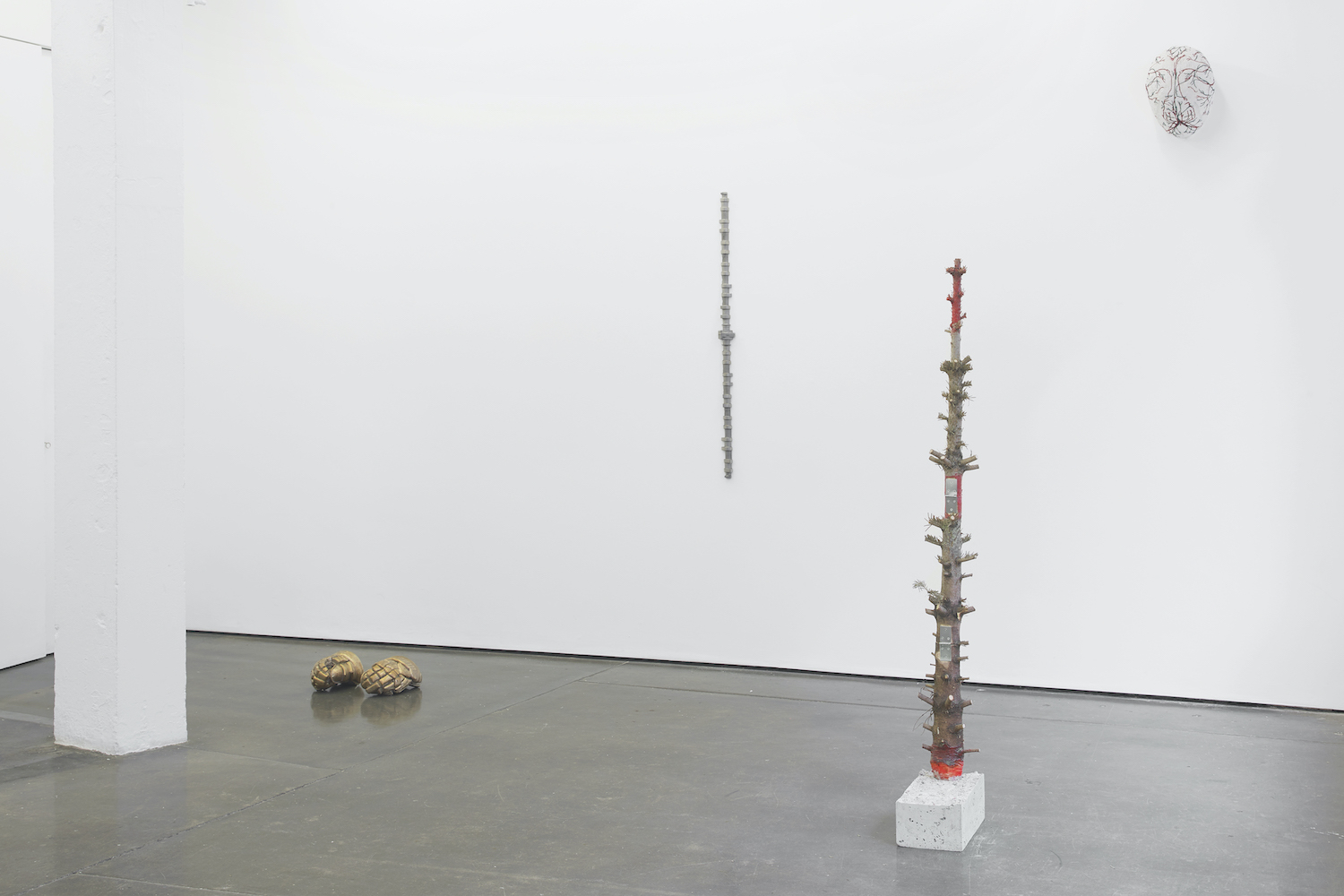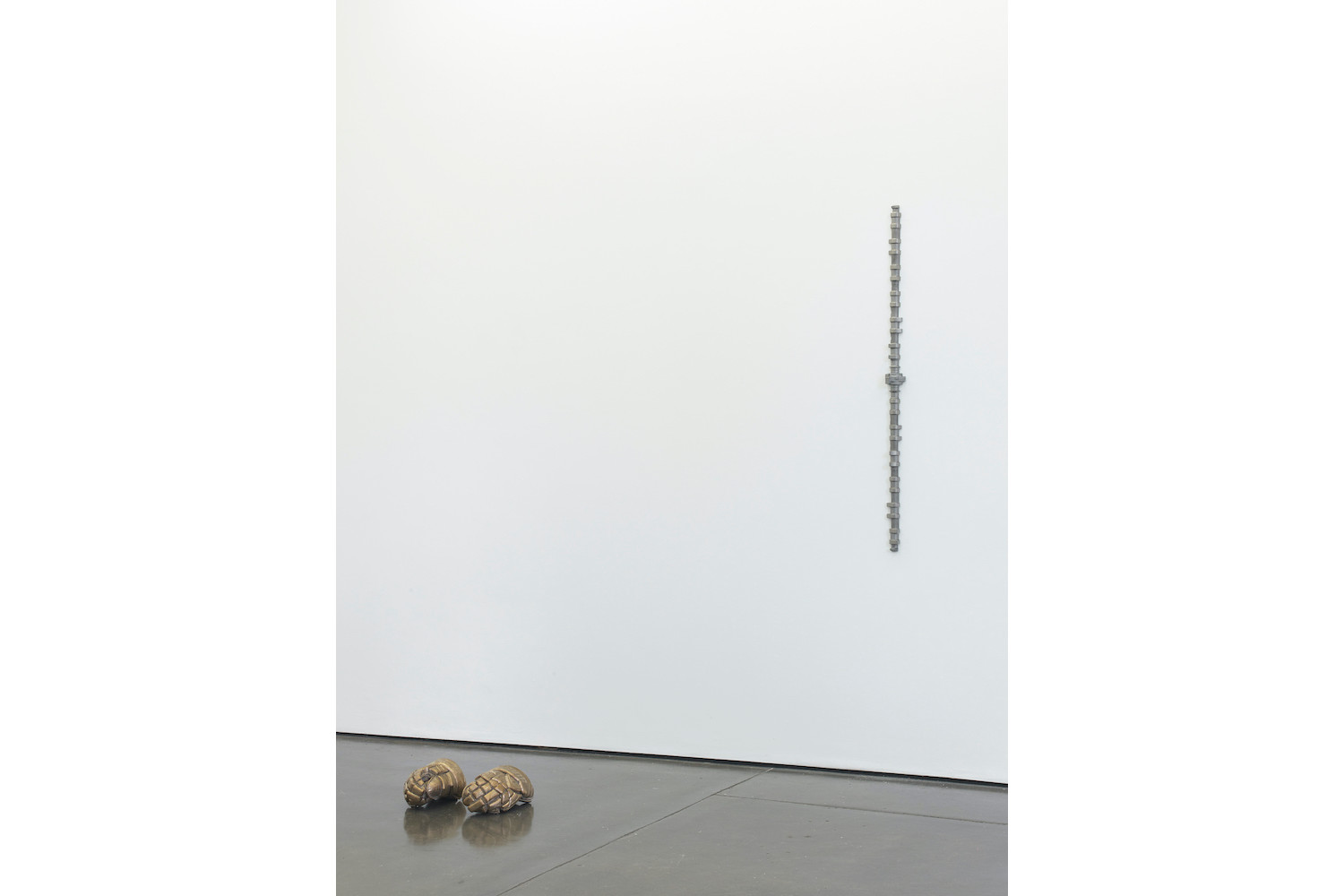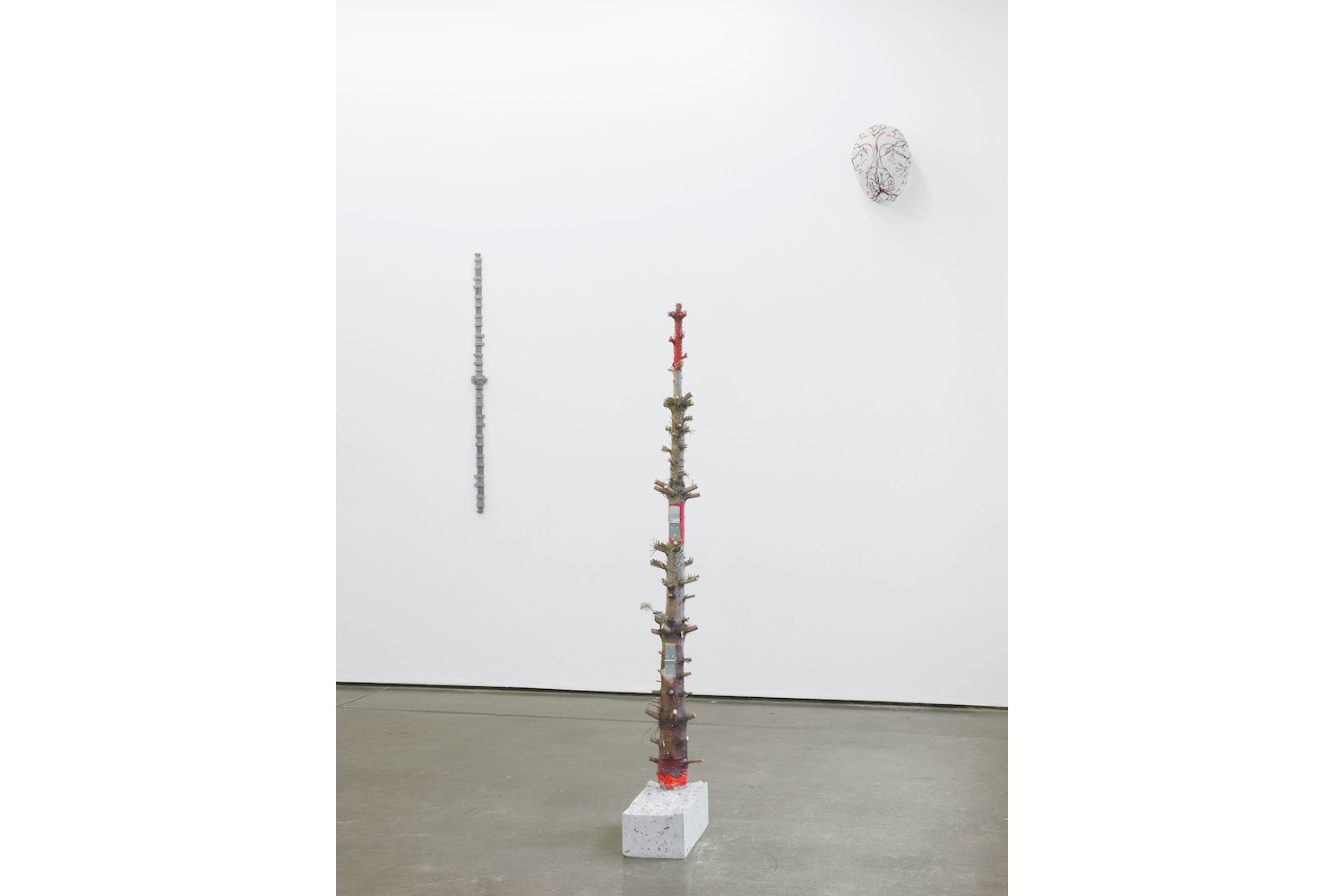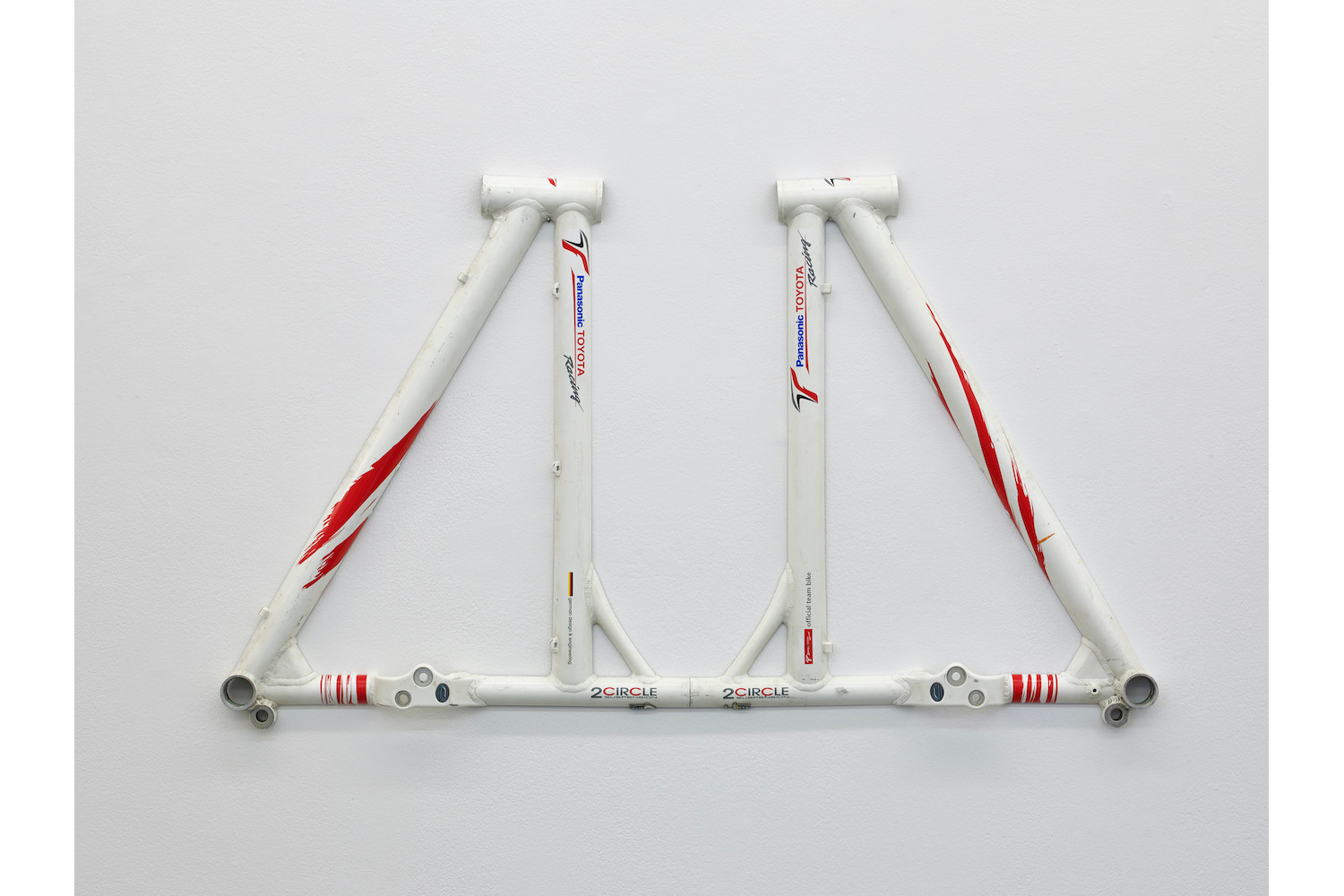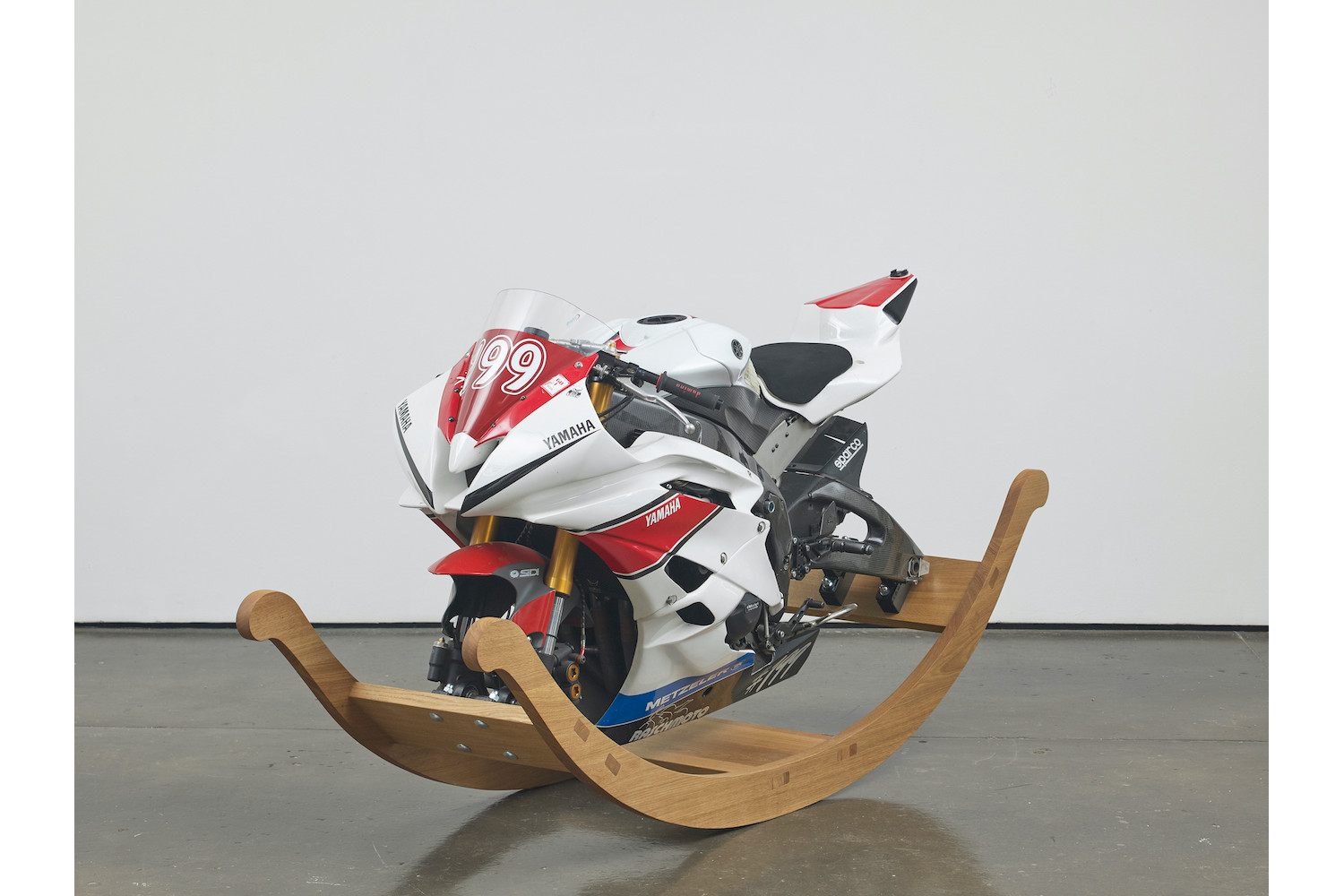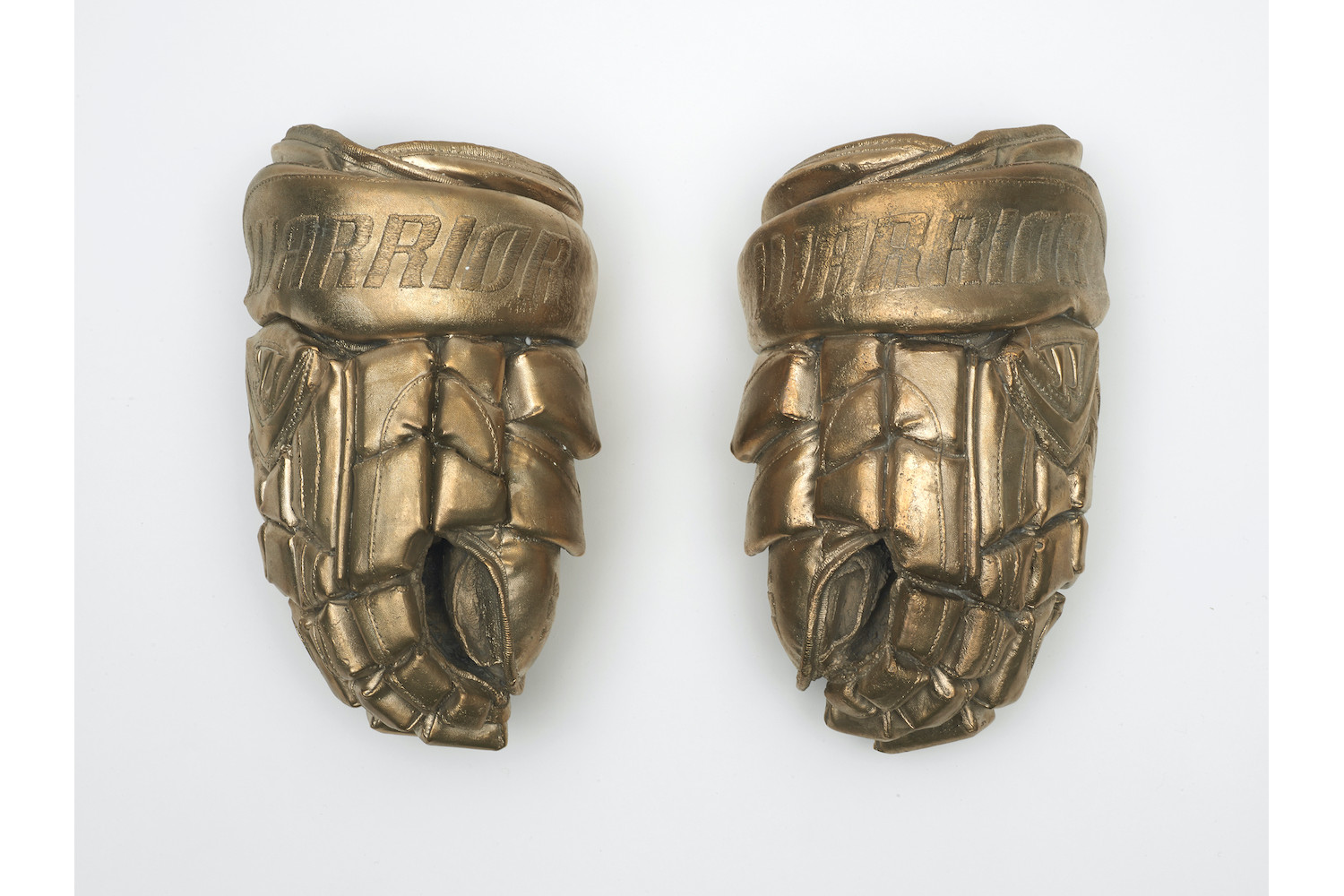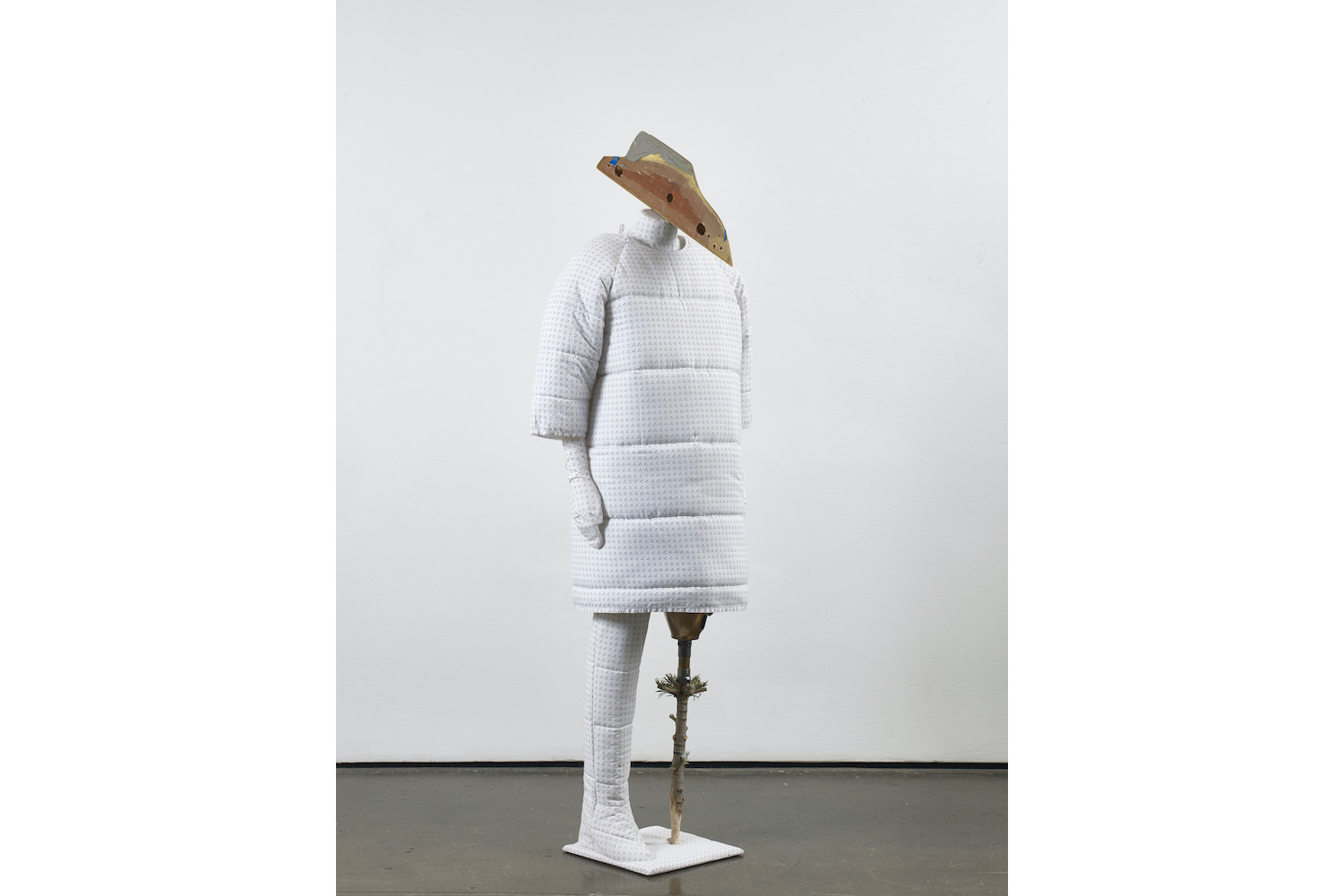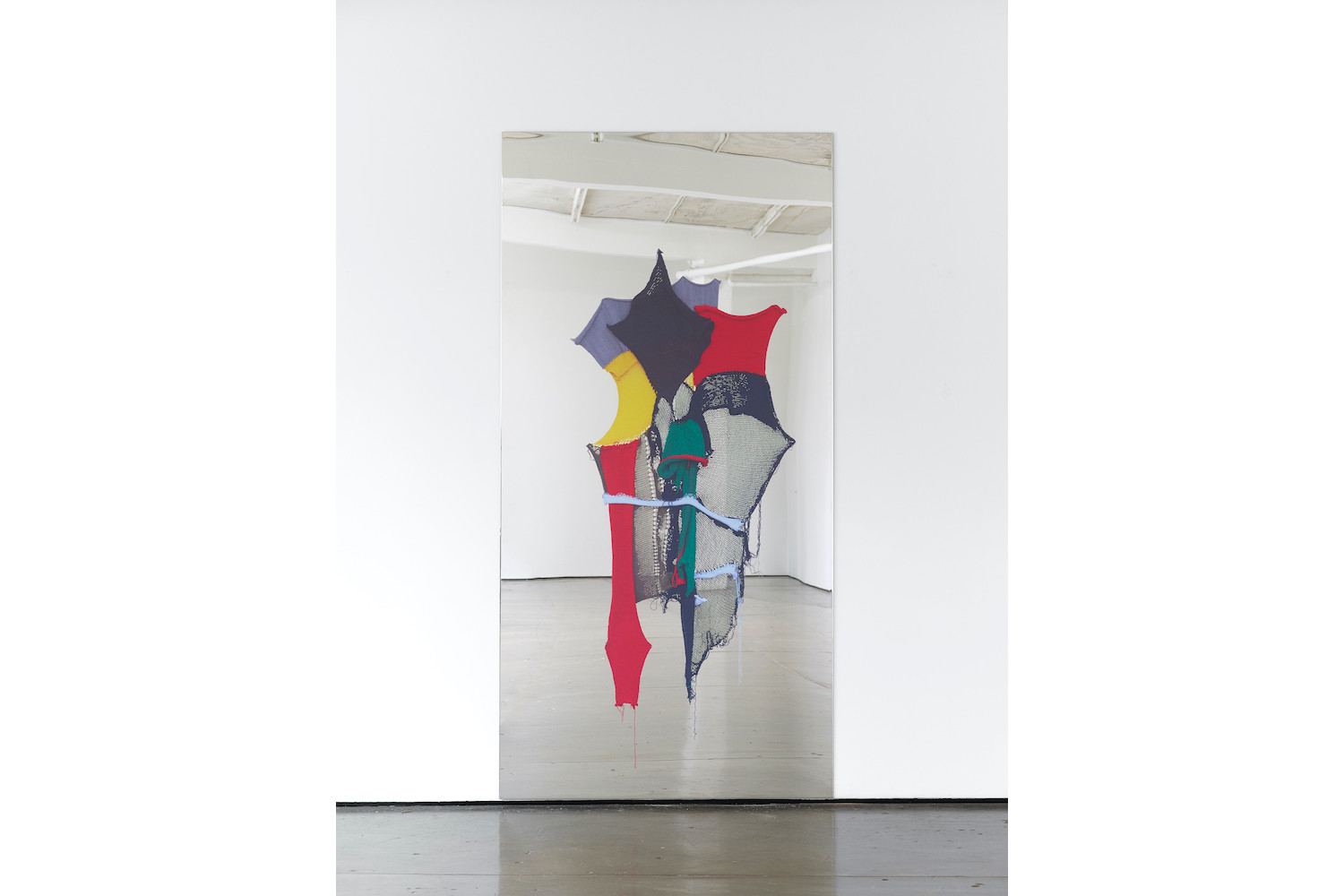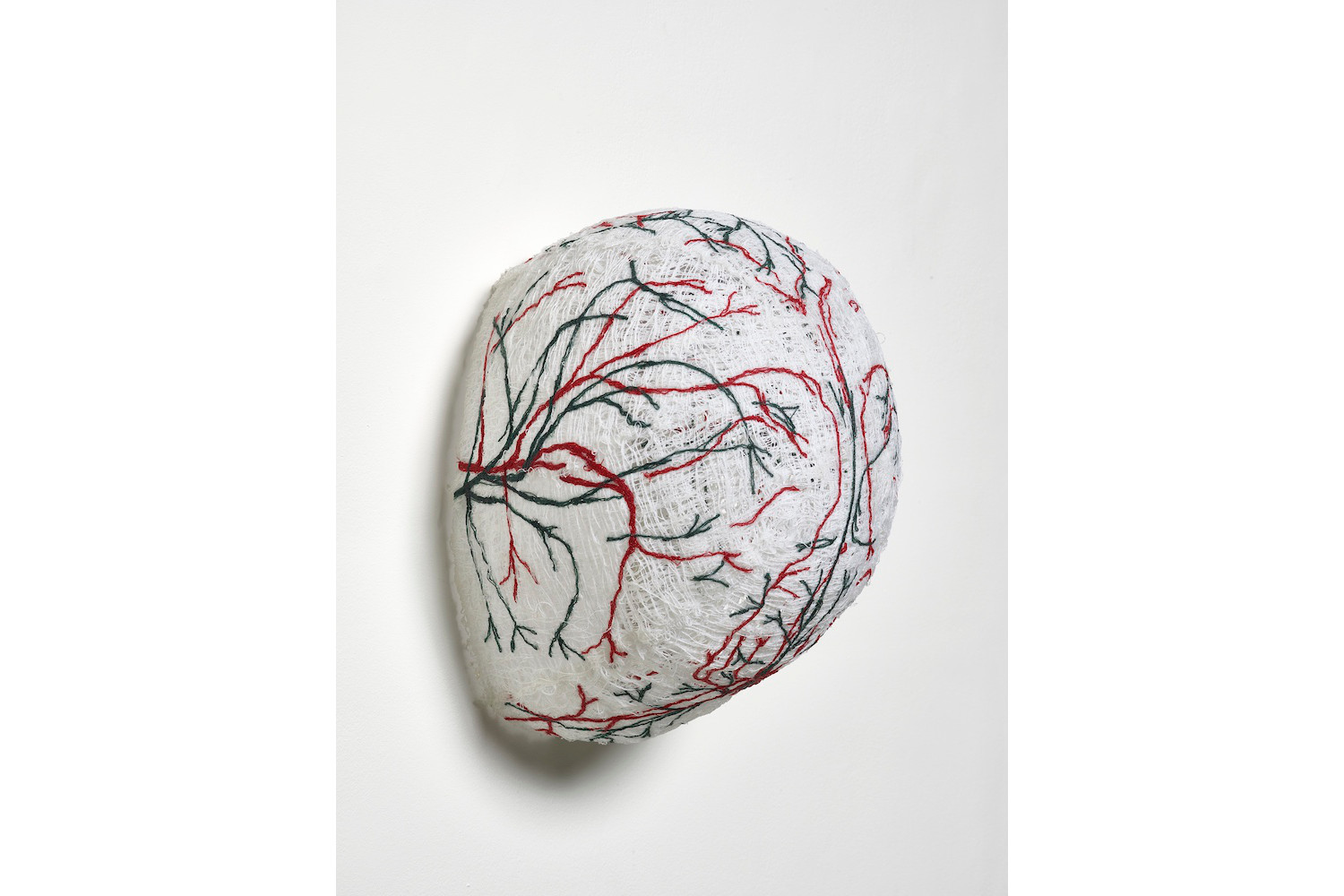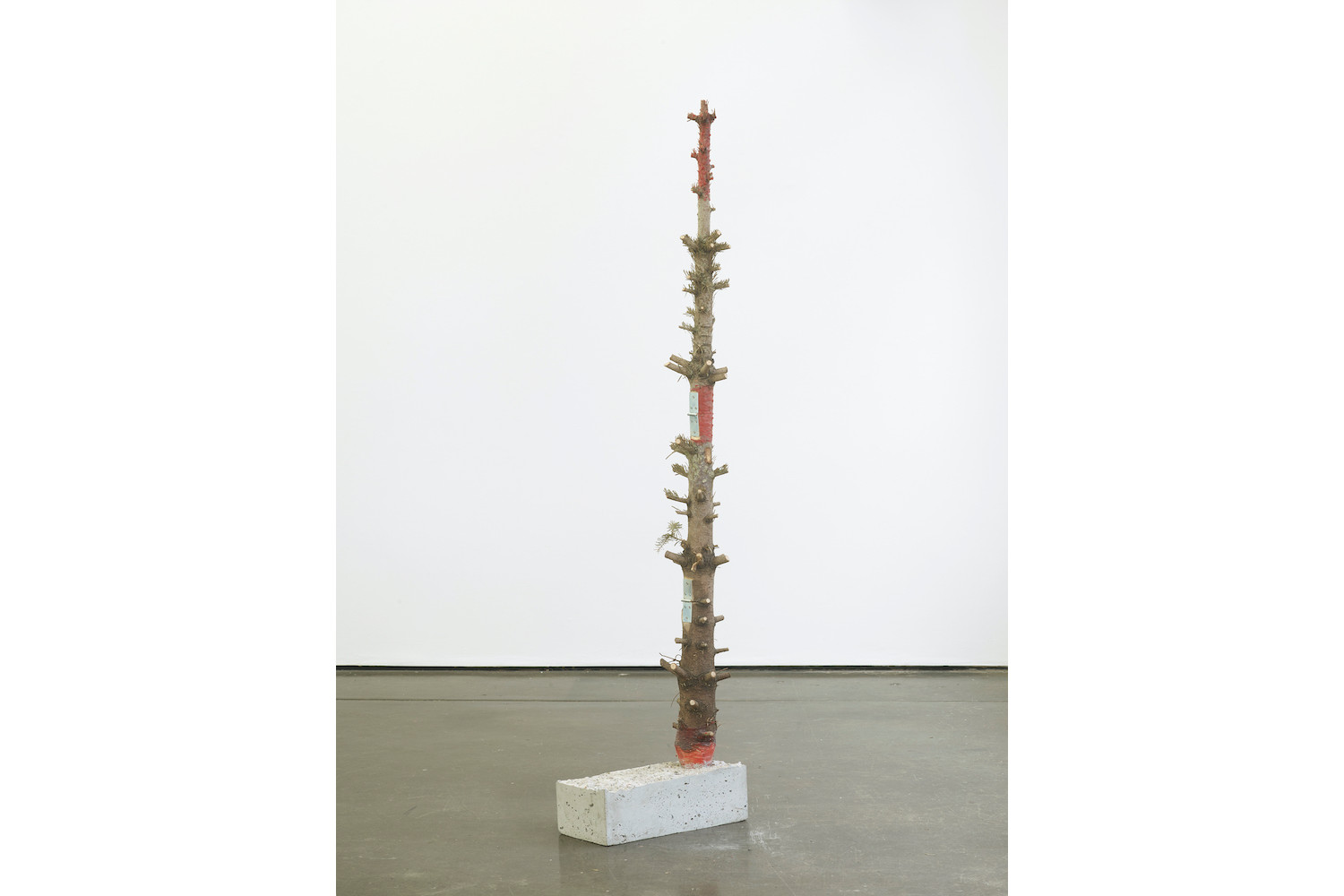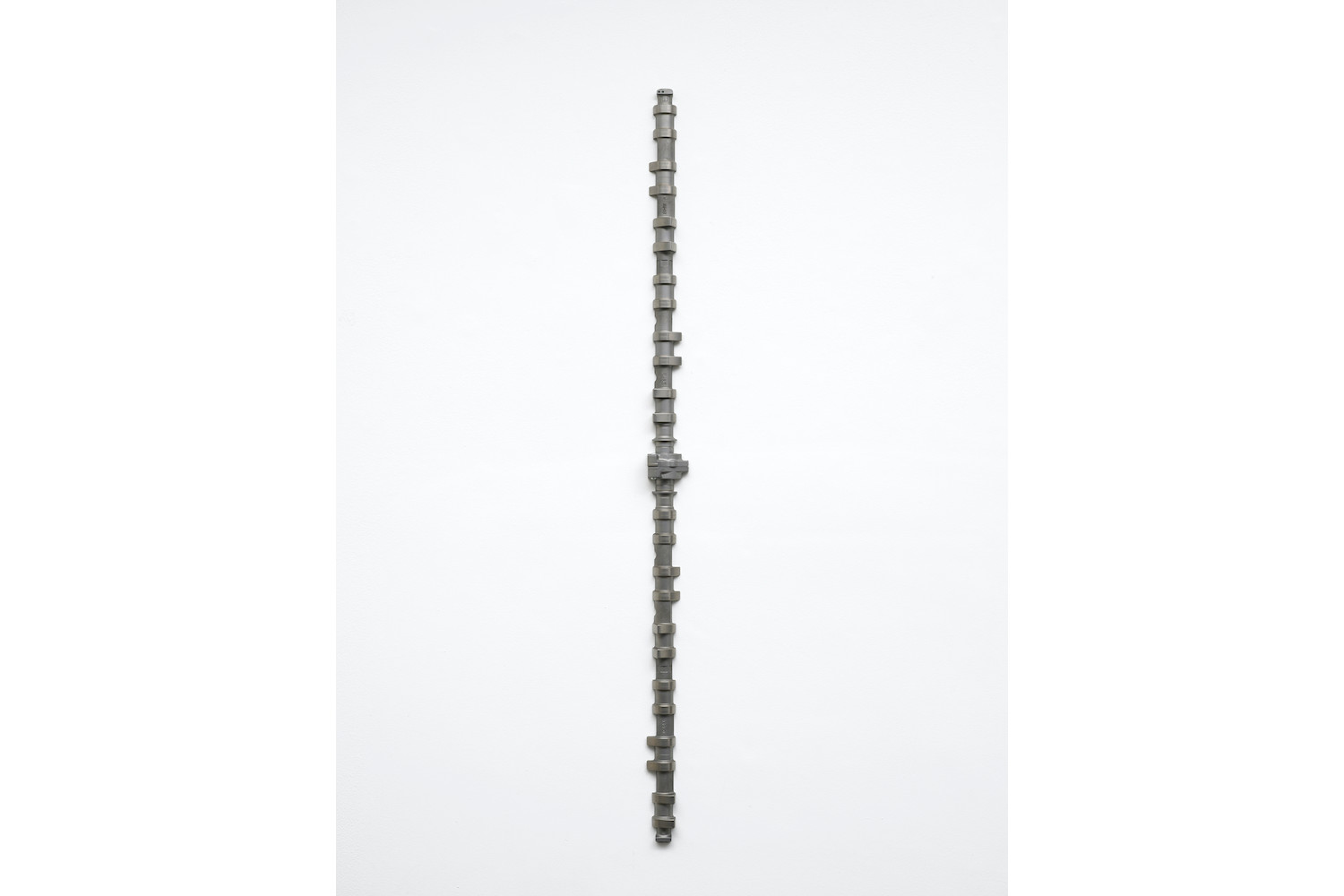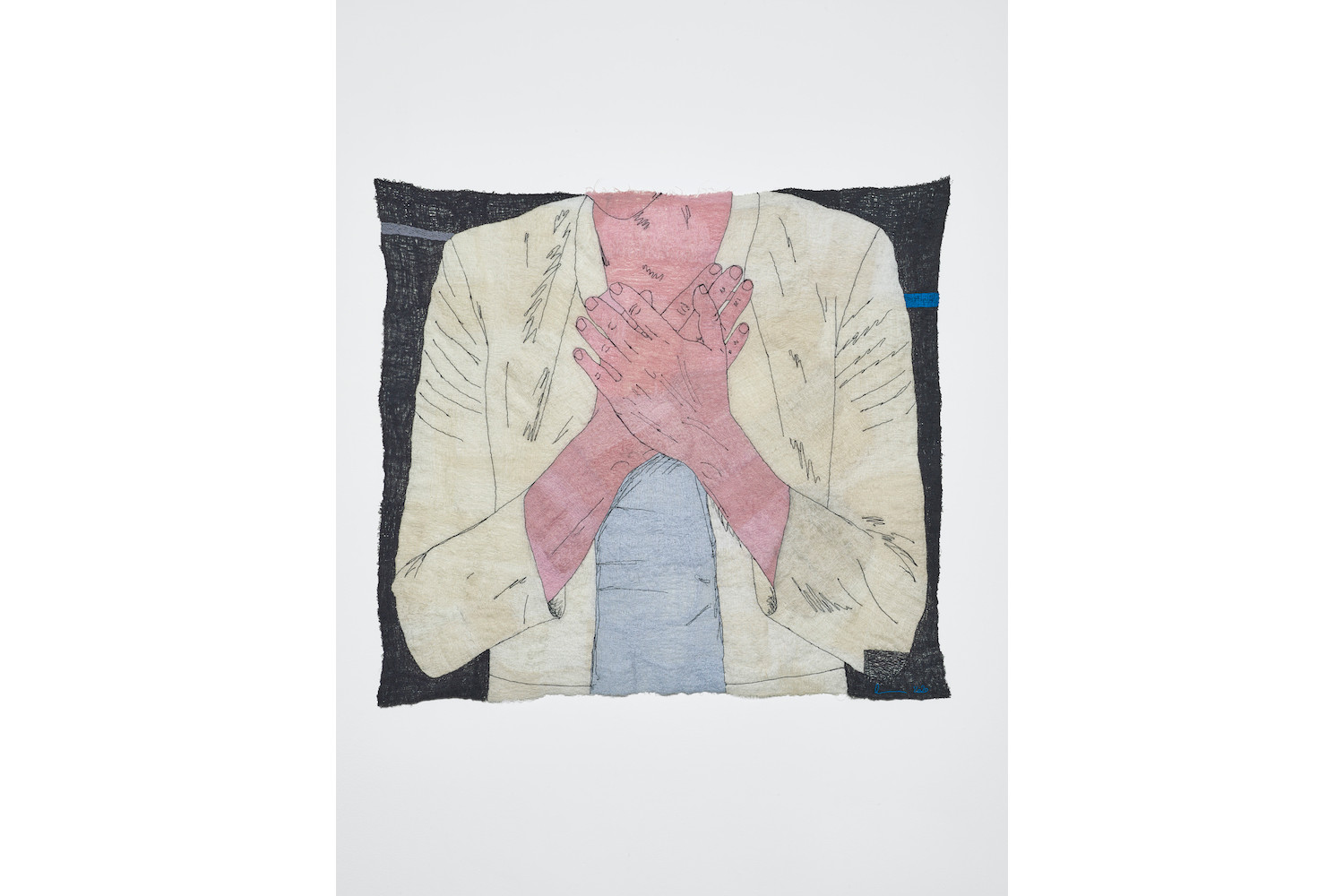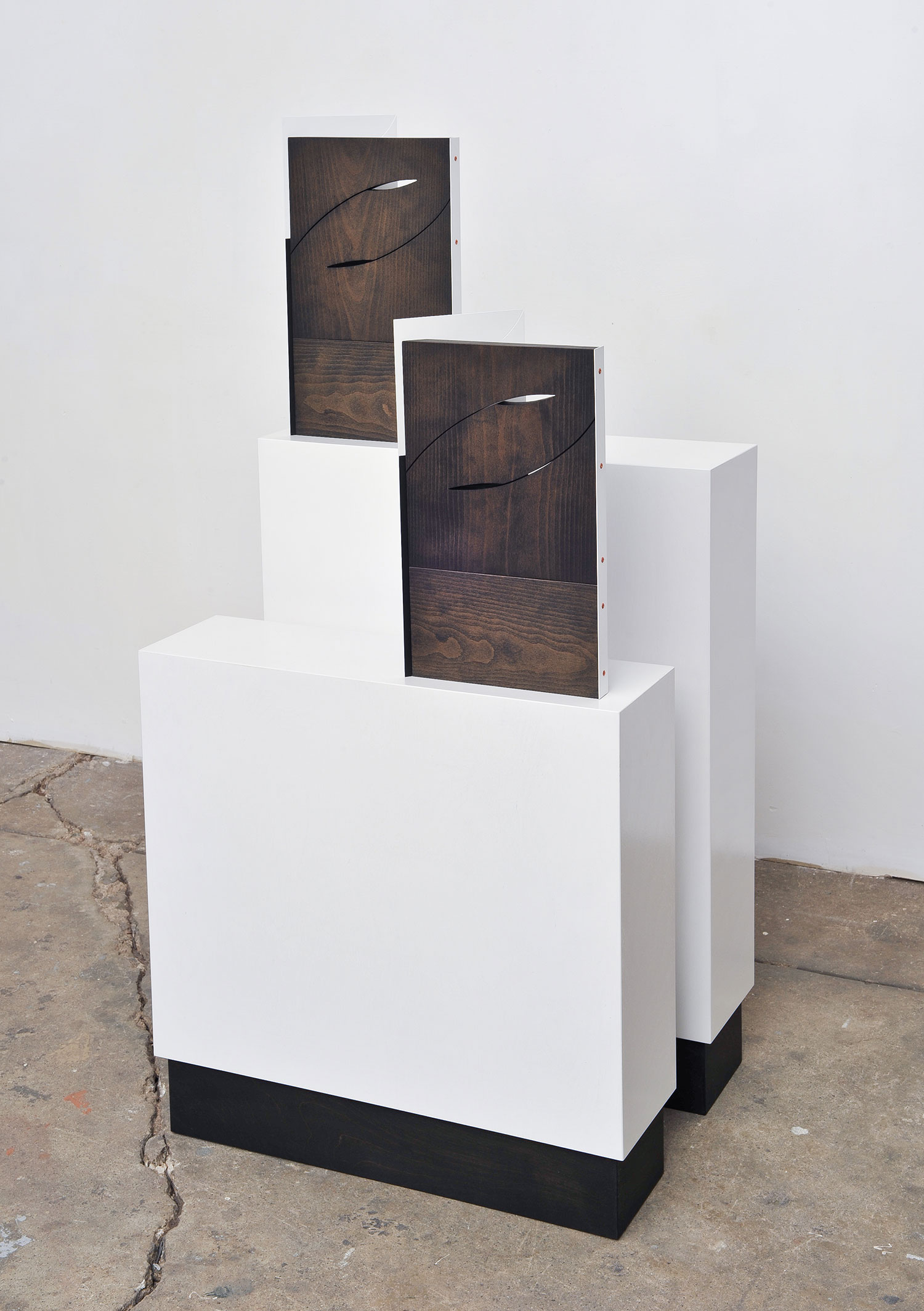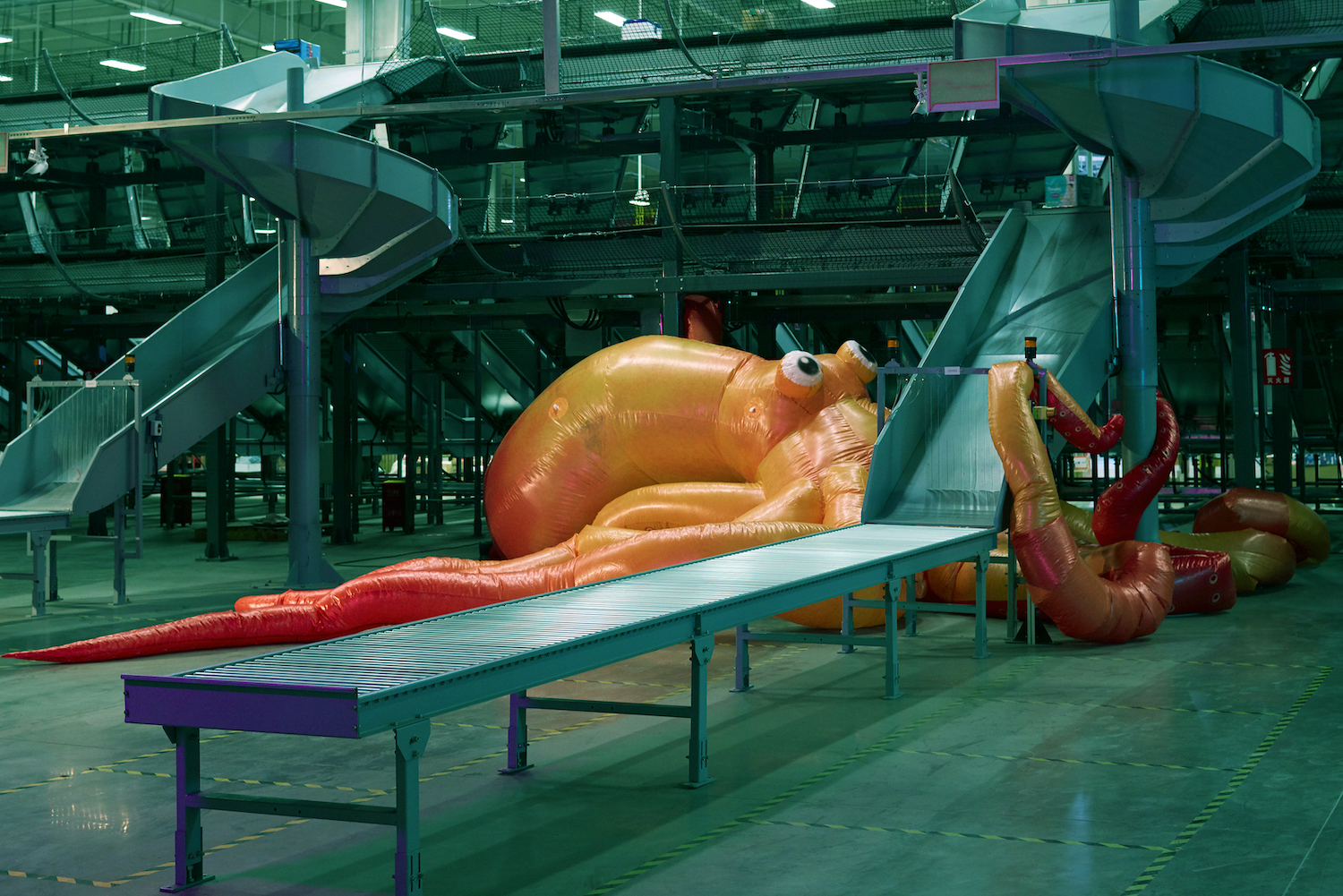Alexandra Bircken’s sculpture manifests from abundance: bronze, branch, thread, wax, steel, motorcycle, with equally diverse treatments: woven, stretched, dissected, dissevered, sliced, flattened, cast. The desiccated, telluric, herbaceous, and provisional coexist with the glossed, clinical, impermeable, and machinic. In ardent mastication of material binaries, Bircken’s practice is utterly androgynous. Such a plethora of execution clearly snags at the corpus of connotation, in turn producing an oeuvre redolent of a contingent and innately porous ontology. Clearly there is prescience in this.
Bircken’s heterogeneous work stresses the motivation and materialization of protection. The moral dimension of protection, as that which designates limits, is corrupted through acts of incision, rendering, or breakage. Fierce, impassioned, hostile, enigmatic: Bircken’s tone is volatile. Mindmap (2020) creates a helmet of polyester thread, its cobwebbed, filamentary casing strewn with vascular stitching; in Warrior (2020), a bronze cast of motorcycle gloves becomes a primordial artifact, their wear forming an inward ammonoid curve. Both works gesture to the body as that which impresses and is impressed upon, stretching the spectrum of protective gear as an intimate, corporeal prosthesis with the body an ecosystem of influence that is always responding to material exchange.
In this quicksilvered violence of severance, abrasion, and puncture, Bircken induces essentialisms to submission, their mutation evoking more brittle and contradictory realities of human nature. As she needles the hierarchy of use and efficiency, Bircken brings into question what substitutes we engineer and rectify when our crutches for advancement or fortification break down. In Lop Lop (2019) the rupture is blatant: a motorcycle amputated of wheels becomes infantilized by the seesawing brace of rocking horse skids. Note a similar surgery: Takstock (Rhythm Stick) (2020) and 2 Circles (2020), a connected camshaft and butterflied bike frame respectively, recall vertebrae in the former and bronchi in the latter. In this slice and dice, Bircken accelerates communication to offer an economy of recognition and emotional exchange that is blunt and blistering in its precision.
Enigma, meanwhile, is found in Bircken’s use of weave. In Ursula (2020), a woven image with a similitude to skin, the president of the European Commission, Ursula von der Leyen, frames her hands crossed over her heart, a vacuous performative gesture that serves another kind of safeguard. The work is compounded by Doctor (2020), a mannequin wadded entirely in a smiley-face-patterned fabric, the figure’s head a sliced, upturned wooden boat evoking the vulturine silhouette of seventeenth-century plague doctors. In this more radical shedding of former overtone, Bircken’s materials become fused by conflict and disturbance. Their schism aggravates the persistent strain of human endeavor while accentuating the strata of fragility symptomatic of experience. Bircken’s palpable acknowledgment of vulnerability becomes restorative but not without portent, inferring that the ultimate pressure rests on the survival of compassion and care.

